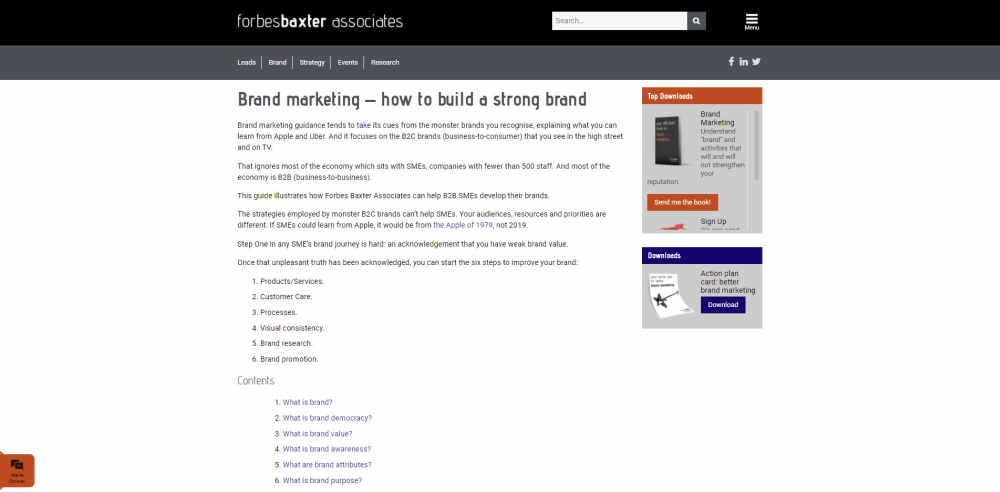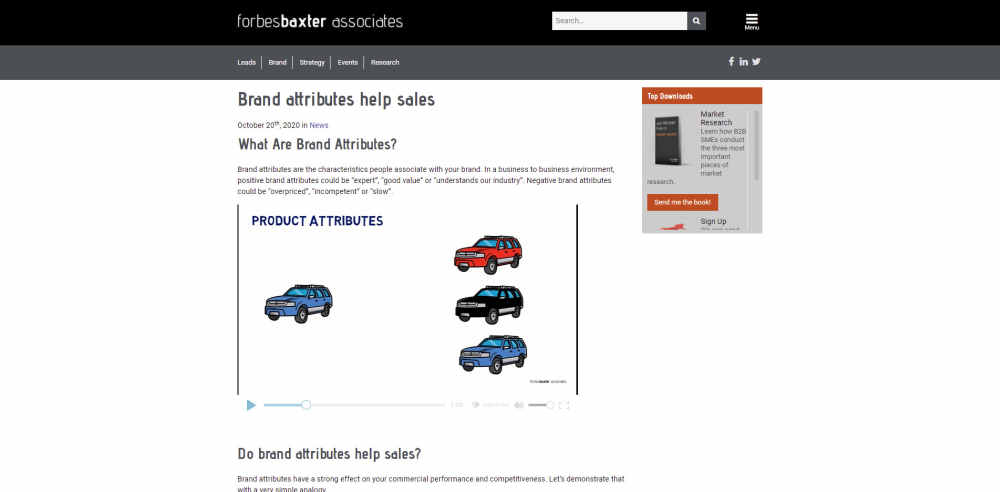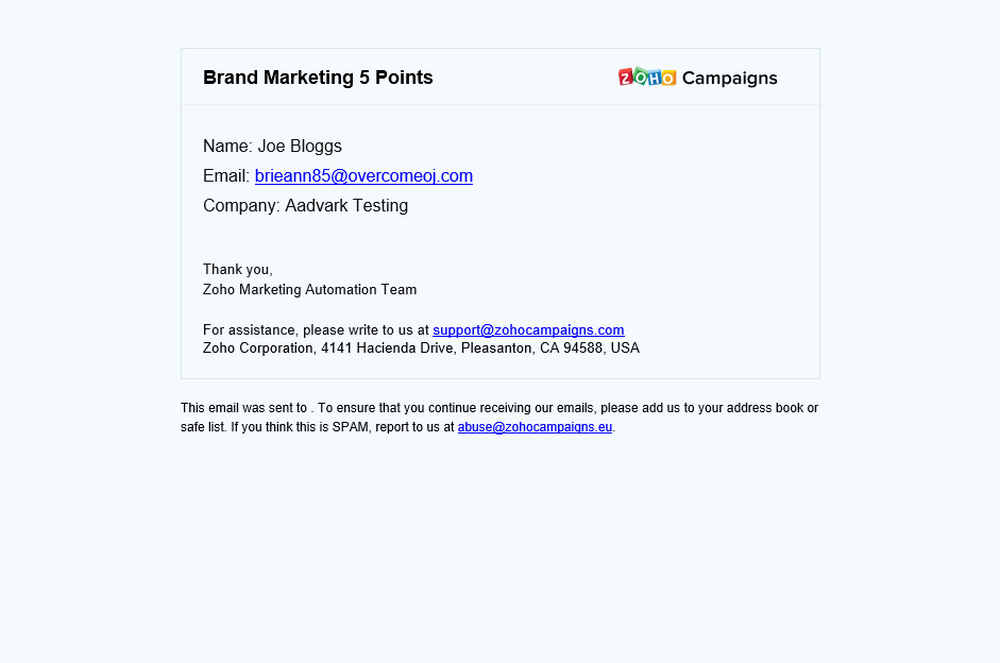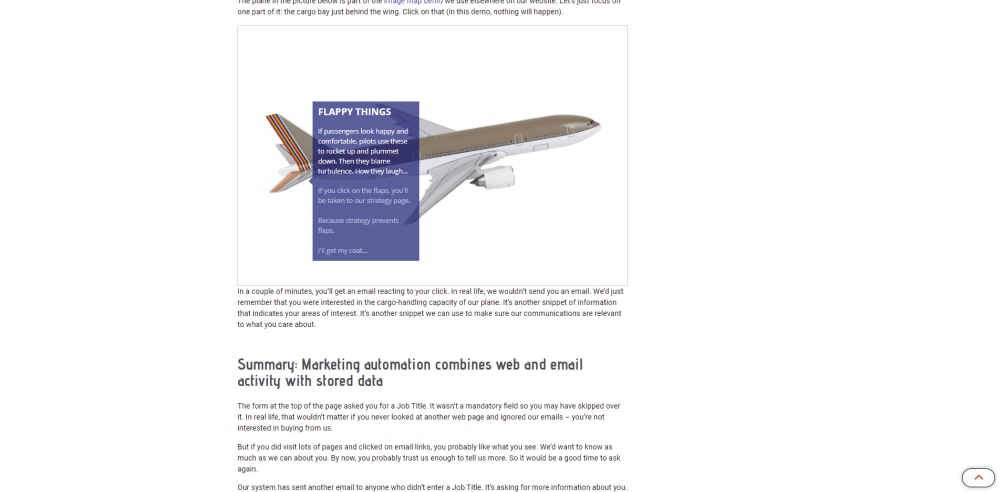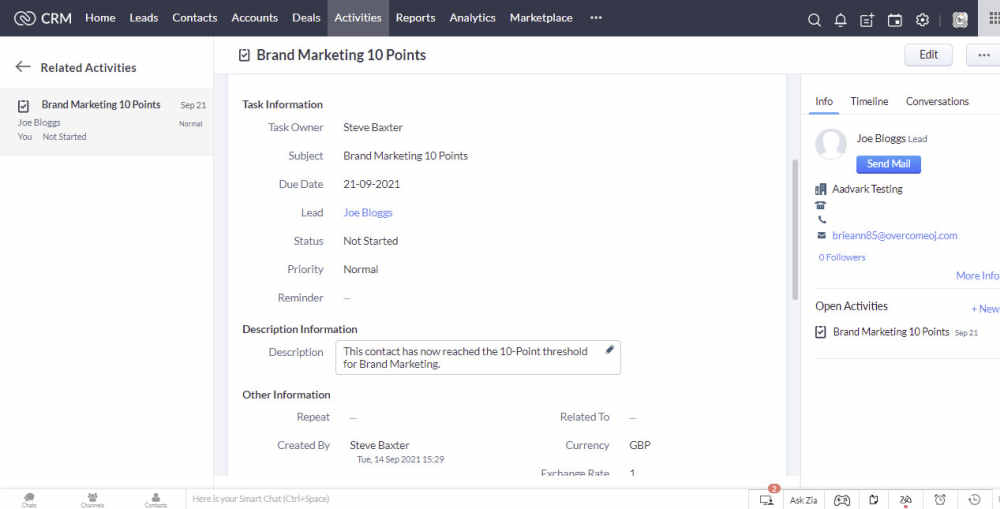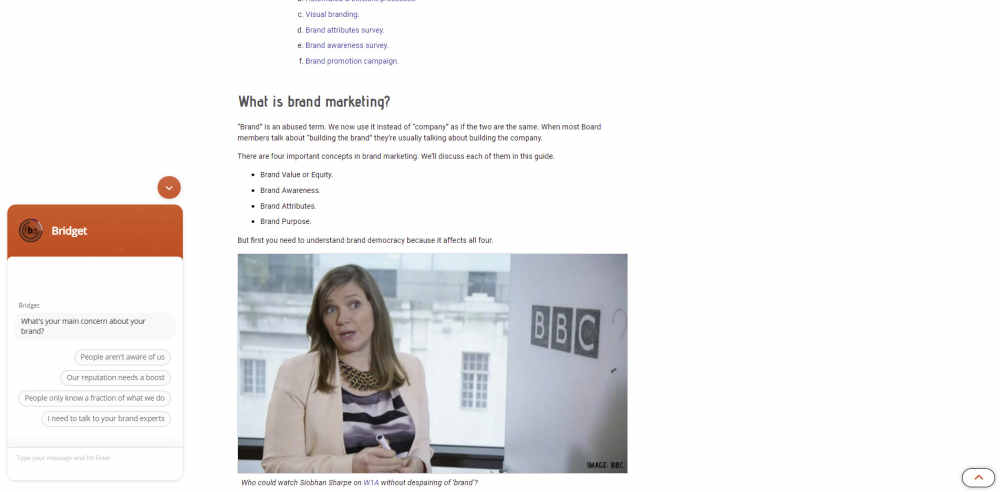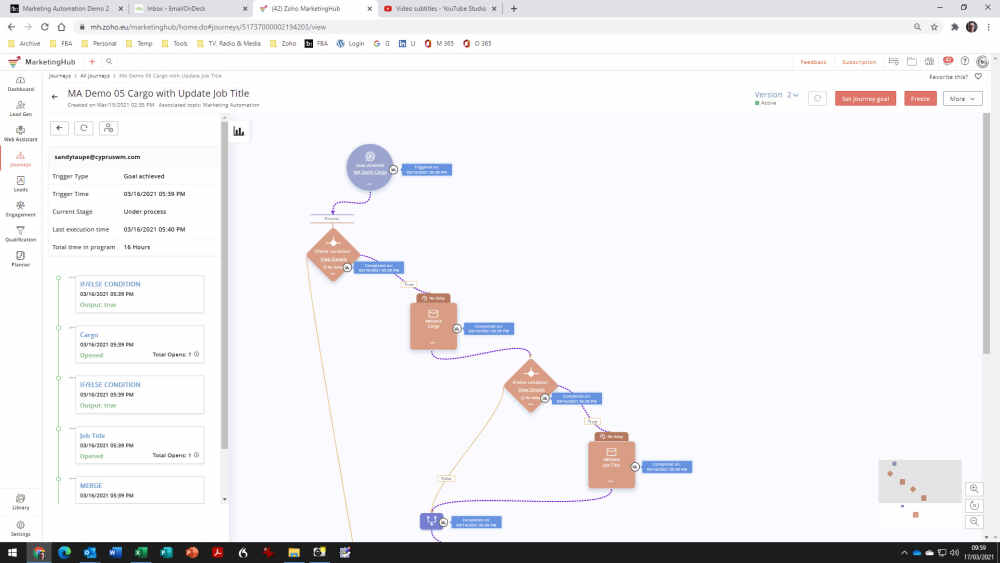What’s the big deal about marketing automation?
This is why marketing automation’s such a big deal.
Think about your website. It’s the single most powerful weapon in most business’ sales and marketing armoury. Let’s use our website as an example.
Imagine Joe Bloggs visits this page about brand marketing.
That leads them to this page about brand advertising.
And then to this page about brand attributes.
That’s all very standard so far.
Marketing automation responds to website activity.
But, on this site, marketing automation is at work.
Because Joe’s visited 3 pages about brand marketing – note: about brand marketing, not any three pages on the website – he’s passed a threshold. So I get this alert by email.
It could go to any of the sales team, of course, but I’m keeping this example simple. You may want your sales team to follow that up straight away.
Me? I’d send Joe an email. But I want it done automatically. And not just any email. An email specifically about brand marketing because I know Joe’s interested in brand marketing. This isn’t email spam. This is 100% on-message. This is the kind of thing that gets read and responded to. And I choose to make it a helpful message, not a self-promotion. I tell Joe about Mark Ritson’s Mini-MBA in Brand Marketing.
That’s the start of what marketing automation does for me.
Time passes and Joe visits this page about weak brands.
But marketing automation’s not all about visiting pages. It’s about what Joe does on pages.
So let’s say he clicks on the NPS image in that page about weak brands to see it more clearly. That’s an engagement signal we want to track.
Or he clicks on part of an image map to get more details about that product. That’s an engagement signal we want to track too.
In marketing automation, all these activities are tracked. And they’re scored. 2 points for visiting a web page, 5 points for downloading something and so on.
Marketing automation triggers sales activity.
By now, I know that Joe’s really interested in brand marketing. He’s scored enough points to pass a second threshold. It’s time for me to get in touch.
Automatically, a task has been created in my CRM system. It’s telling a member of the sales team (me, actually) who to call and why to call. It’s telling the salesperson what Joe’s interested in. And it’s all in CRM now. Because this is an integrated system. Our website is linked to our email marketing system and our CRM system.
So that’s how marketing automation helps turn website visitors into customers.
Marketing automation identifies anonymous visitors.
Before this works, of course, you’ve got to know that the anonymous visitor trawling through your website is none other than Joe Bloggs. How do you persuade him to identify himself? Marketing automation helps here too.
First, if Joe was somebody you knew of, try emailing him from your marketing automation system. Tell him what you can do for him. If he responds to the email, you can watch what he finds interesting on your website. And by the way, this isn’t the type of creepy cyber-stalking 3rd party cookies used to do. This is just watching your own website. It’s like a shop assistant watching what clothes you seem to like.
Secondly, if you Joe’s totally unknown, you can use pop-ups on your website. If an anonymous visitor looks at three pages about brand marketing, use a pop-up to say “we’ve got lots of advice about brand marketing, do you want to see it?”
Or you can use a chatbot to ask the same visitor what their main brand challenges are. And the chatbot provides answers. And you find out who that anonymous visitor is.
These are all different aspects of marketing automation at work.
Marketing automation improves your email.
But that’s not all. It’s email management too.
Email is the most cost-effective marketing tool. With marketing automation, you can add a new lead to your prospect list and they’ll automatically get emails, all properly spaced in time. And it’ll track what your prospects do in response to that email. And when you have a new idea for an email, it gets added to the automatic sequence. With tracking.
So…
- Marketing automation turns anonymous website visitors into customers.
- And it improves your email marketing.
- And it responds to sales data if you connect it to your sales ledger (that’s a topic for another day).
- And it does it all automatically.
That’s why it’s such a big deal.
Life without marketing automation sucks.
Compare that to life without marketing automation.
- You’ve still got a website.
- You’ve probably still got the scars from the bill for the redesign.
- You’ve spent months optimising content to attract new visitors.
- So numbers are going up.
- And…
- NOTHING.
- It’s activity without advantage.
- All those visitors are anonymous.
- You’re not making money out of it.
It’s the most pointless marketing activity you’ve ever undertaken (and the competition for that title is tough).
Look at your emails too.
- You’d prefer a proctologist’s appointment to repeating the agony of creating your first ten emails.
- But you created them. And you sent them out.
- What results did they get?
- YOU HAVE NO IDEA.
- You can look at click-through rates but that tells you nothing really.
- What appointments did you get?
- What calls do you have to make?
- What deals did you land?
- It’s not going to persuade you to create another ten emails, is it?
In the absence of marketing automation, your website and your emails are lost in the wilderness.
The bottom line.
If you’re the MD, you’re wondering what you get for your marketing budget. Why shouldn’t you slash that budget next year?
If you’re the head of marketing, you’re wondering how long your job’s going to last.
It could all be so different.
Next steps.
- The DIY route. If you want to put marketing automation into action, you need:
- We do everything described here using Zoho One, a suite of apps that can basically run your entire business. The three specific apps you’d need to look at are Zoho Marketing Automation for the website tracking, pop-ups and email management. And Zoho SalesIQ for the chatbots. And Zoho CRM for the CRM. It costs £80 per user per month. You could also use HubSpot, (Pardot) Salesforce and a host of other platforms but they cost a whole heap more. It’s also worth knowing that Zoho Marketing Automation 2 is coming soon.
- You need to categorise the events you want marketing automation to track. So, for example, every web page about brand marketing needs the word “brand” in its URL. If you’re lucky, they already do.
- You need to setup fields in your marketing automation system to hold scores on the topics you care about. For me that’s brand marketing, lead generation, etc. For you, it’ll be different.
- You need to tell marketing automation how to score events on your website: 2 points for visiting a web page, 5 points for downloading something, etc.
- Then you need to setup the thresholds and their associated actions. When somebody reaches 10 points, an internal alert; at 15, an email; at 25, a follow-up task in CRM.
- You can find more details of this process on our “making marketing automation work” page.
- And you need to create ‘the content’: the web pages that visitors want to see, the emails they’ll be grateful to receive, and so on.
- The Assisted route. If you don’t have the time, people or system to do this yourself, well, that’s what we’re here for. Give us a call. We’re surprisingly friendly.
Remember, Forbes Baxter Associates is a marketing development agency so we develop your in-house marketing skills while we help you grow your business.

